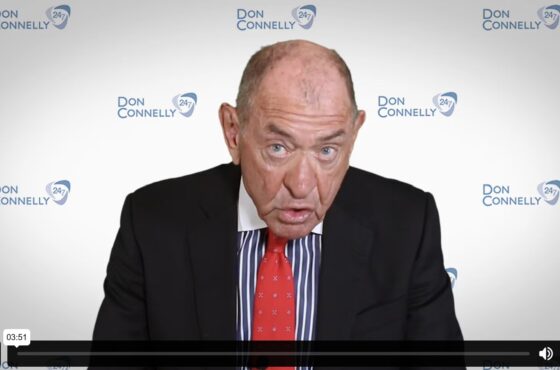How to Build Your Story-Benefit Matrix
 Last week I blogged about a useful sales tool called a story-benefit matrix, and why you should develop one for your practice. Just going through the process is beneficial: It forces you to think through a number of different ways your prospective client will benefit by working with you – and gives you an opportunity to help tell an illustrative story that will cement that case.
Last week I blogged about a useful sales tool called a story-benefit matrix, and why you should develop one for your practice. Just going through the process is beneficial: It forces you to think through a number of different ways your prospective client will benefit by working with you – and gives you an opportunity to help tell an illustrative story that will cement that case.
It’s basic “soft-skills” at work.
But it’s helpful to understand how to build one yourself, so let me help you with that.
Story #1. Ticket to Springfield
Here’s an example, drawing from a great old story – I don’t know the precise origin, but I got it from George Wright, a great advisor and long-time friend of mine from Rhode Island:
A traveler comes running into the lobby of a train station and breathlessly says to the ticket agent, “Quick, quick, quick! I need a ticket to Springfield!”
“Springfield?!” asks the ticket agent. “Which Springfield? Alabama? Arkansas? California? Colorado? Georgia? Kentucky? Florida? Idaho? Tennessee? Illinois? Louisiana? Maine? Mississippi? Missouri? Maryland? Massachusetts? Nebraska? New Hampshire? New Jersey? New York? North Carolina? Ohio? Oregon? Michigan? Minnesota? Pennsylvania? South Carolina? South Dakota? Tennessee? Texas? Virginia? Vermont? West Virginia? Wisconsin? Springfield Crossroads, Delaware? Which one do you want to go to?”
The traveler says, “I don’t know… which one is the cheapest?”
Well, what benefits does that story go to? It illustrates value. A ticket to the wrong town, no matter how cheap, does not represent a good value for the traveler. Assuming he knows and cares where he’s going.
Similarly, your prospect or client may not get the best value out of the wrong product just because it’s the cheapest, right?
Now, it’s in your best interest to command a respectable fee – but the client doesn’t care about that. And they shouldn’t! Clients should care about value – and about reaching their financial goals.
So the story illustrates that paying a little more money can provide a lot more value than paying too little for the wrong product.
So you can write this out on paper, or create a spreadsheet – it doesn’t matter which. But write “Springfield Story” at the top.
Then below it, fill in all the benefits to the client that you can think of:
| Springfield Story |
| Value |
| Avoiding the “wrong” solution |
| Having a plan and a strategy to guide decision-making |
| Etc., etc., etc., |
Then you go on to your next story.
Story #2. The Traffic Jam in Manhattan
So, you go back to your spreadsheet and add another one. Here’s one I like to use:
“Mr. and Mrs. Client, suppose you decided to take a drive from New York to Los Angeles. You’ve never been to California before and you’ve always wanted to go. Let’s say your grandchildren are there and you want to go see them for the first time. Something really important!
But heading out of Manhattan, you run into a traffic jam right out of the gate. It takes you almost an hour to go one mile.
Do you decide “at this rate it’s going to take months to get to Los Angeles!” and turn around and go back?
No.
You’re focused on the goal! You’re focused on what’s important! You’re not going to let a little one-hour traffic jam get in your way!
Now, go to your story-benefit matrix and write down all the benefits to the client that you can think of that this story represents.
| Springfield Story | Traffic Jam in Manhattan |
| Value | Having patience |
| Avoiding the “wrong” solution | Ability to put setbacks in perspective |
| Having a plan and a strategy to guide decision-making | Having a plan and a strategy to guide decision making |
| Etc., etc., etc., | Avoiding recency bias. Just because something is happening now doesn’t mean it will continue forever. This is not the long-term norm. |
Then, move on to your next story.
Story #3. National Lampoon’s Vacation
Remember the movie National Lampoon’s Vacation? With Chevy Chase?
If the Griswolds let every little mishap on the road cause them to panic and turn around and go home, do you think they ever would have made it to Wally World? Heck no!
So what benefits for the customer can you tie that to?
Let’s go back to your story-benefit matrix:
| Springfield Story | Traffic Jam in Manhattan | The Griswolds |
| Value | Having patience | Having patience |
| Avoiding the “wrong” solution | Ability to put setbacks in perspective | Ability to focus on a long-term goal |
| Having a plan and a strategy to guide decision-making | Having a plan and a strategy to guide decision-making | Benefit of hedging your bets (jump in the pool, but wear a swimsuit) |
| Etc., etc., etc., | Avoiding recency bias. Just because something is happening now doesn’t mean it will continue forever. This is not the long-term norm. |
Story #4. Black Monday
Here’s another one. This one’s good for the middle of bear markets, when everybody thinks stocks are awful.
“Mr. and Mrs. Client, do you remember Black Monday? It was October 19th, 1987. I’ll refresh your memory: The stock market fell 22.6 percent in a single day. Malaysia, Mexico and New Zealand stocks fell by more than 30 percent. People were afraid there would be another Great Depression.
But what really happened was this: Black Monday was one of the best buying opportunities in the history of the stock market. It was scary to a lot of people at the time. But the opportunity was in the fear. The panic fed on itself and caused people to sell too low.
What followed was the beginning of one of the greatest bull markets in the history of the stock market.
Here: Can you even see it on the graph?

Data: Markettrends.net
Let’s go back to your story-benefit matrix and see what benefits the Black Monday story highlights for your client.
| Springfield Story | Traffic Jam in Manhattan | The Griswolds | Black Monday |
| Value | Having patience | Having patience | Having patience |
| Avoiding the “wrong” solution | Ability to put setbacks in perspective | Ability to focus on a long-term goal | Ability to focus on long term. |
| Having a plan and a strategy to guide decision-making | Having a plan and a strategy to guide decision-making | Benefit of hedging your bets (jump in the pool, but wear a swimsuit) | Ability to control your emotions |
| Etc., etc., etc., | Avoiding recency bias. Just because something is happening now doesn’t mean it will continue forever. This is not the long-term norm. | Seeing opportunity where others see only danger |
And so on and so on.
Build your vocabulary of stories.
Over the years, I’ve amassed a vast vocabulary of stories, analogies and power phrases. They’ve helped me bring on board innumerable clients, and they’ve helped me keep a lot of good clients when the chips were down, and they were thinking of going to cash and closing their accounts with me.
But things always came back. Maybe not right away – but the big market jumps happen when nobody expects them.
So, do the same now for all your favorite stories. Everyone has a different history, different products, and provides slightly different benefits to clients. It’s fine if yours doesn’t look exactly like someone else’s. But you can certainly collect them from other people.
Rehearse, Rehearse, Rehearse!
Don’t just sit there playing around with a spreadsheet. You’ve got to rehearse these stories thoroughly. Practice telling them. Record yourself, and listen back with a critical ear.
You don’t want to be telling the perfect story, and have it not hit home because you messed up the delivery.
Now, go call people and help them reach their goals.
Watch this 2-minute video to learn how Don Connelly 24/7 will help you hone your storytelling skills, among other things.
We recommend the PLATINUM membership for its best value for money. Click here to compare available membership levels.



